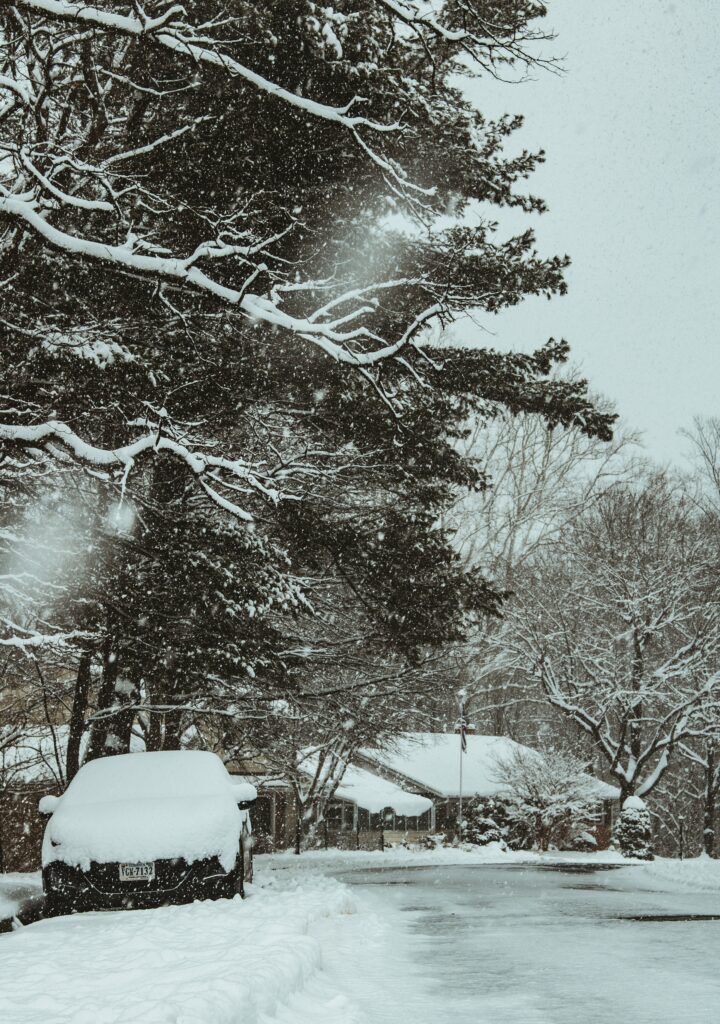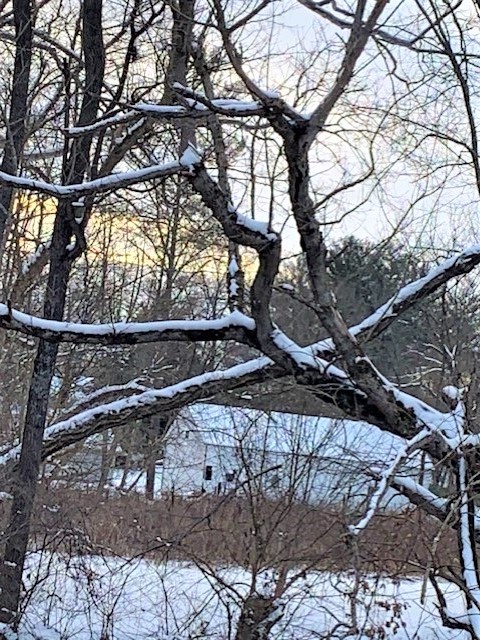
It’s official: according to the groundhog, Punxsutawney Phil, we can expect a longer winter season. With a longer winter comes a likely continuation of the weather we’ve seen from Winter Storm Orlena this past week.
Whether you’re the type of person who loves playing in the snow with your family or the kind of person who prefers to stay bundled up indoors with a cup of hot chocolate, one thing’s for sure: you need to keep an eye out for snow.
In this article, we’ll discuss what mistakes you may be making, what your tree or shrub may look like if it has sustained damage, and what you can do to protect your trees & shrubs from heavy snow that may come their way.
4 Things NOT To Do
When it comes to dealing with snow, proper tree and shrub care tends to slip the mind of most homeowners. It’s understandable. It’s easy to get sidetracked with the snow and ice that immediately needs to be cleaned off your driveway or car.
While the following mistakes can be easy to make, understanding them and then making small changes can protect your trees and shrubs from heavy snow this winter.
1. DO NOT shake the tree or shrub. By shaking the plant, you can actually do more damage to it, especially if there’s ice.
Instead, very gently brush off the snow on trees & shrubs. Simply taking a broom and brushing off the snow from your plants will lighten the load that is weighing down on their branches – and may save a limb or two, or even the whole plant. That said, if there’s ice, it’s safer to just leave it alone.
2. DO NOT shovel or plow snow onto shrubs. While it may seem obvious now, the fact that you’re adding more weight to the plant can easily be forgotten as you’re in the middle of the activity. Be mindful of your plants. Don’t pile more snow on your shrubs as it can add to the load that’s already there.
3. DO NOT let plow trucks drive over the critical root zones (CRZ). High traffic further compacts soil and damages root systems. While snow itself won’t destroy the roots, overly compacted soil can be detrimental to the plant and can ultimately lead to tree or shrub death.
4. DO NOT lay salt near your plants. Salt can negatively impact tree and shrub health and lead to a series of symptoms, such as: browning needles, marginal leaf burn, delayed flower & fruit development, and more.

Symptoms Of Winter Damage
Did you realize you made any of the above mistakes? If so, it’ll be especially important for you to watch out for the following signs of winter damage in your trees and shrubs.
- Noticeable difference in plant health
- Cracking or splitting tree bark
- Noticeably substantial root damage
- Broken or hanging tree limbs or branches
- Leaning tree or falling limbs or branches
- Unsightly shrubs
If you’re concerned your tree or shrub may have sustained winter damage, we recommend having a Certified Arborist come out to inspect it and create an action plan. As long as the damage isn’t too severe, the tree or shrub will likely be able to recover through proper pruning (“trimming”).
What You Need To Do Now

As with most things, a proactive, preventative strategy of tree and shrub maintenance can help reduce risk and help them live happier and longer. Whether or not your plants have been damaged by Winter Storm Orlena, the best thing to do is move forward and protect your plants from the next heavy snow that hits.
To help your trees and shrubs stay protected through the winter season, we recommend:
1. Maintenance pruning and inspections: While you should keep an eye on your plants, Certified Arborists have the expert eye needed to properly inspect them. The tree expert will be able to identify and correct structural defects that need to be taken care of. The proactive, professional pruning will improve your plant’s safety, reduce unexpected limb or tree failures, and keep your landscape healthy.
Note: Despite popular belief, winter is the BEST time of the year for tree trimming and inspections, so make the most of the season and get started ASAP.
2. Cabling & Bracing: If your tree needs extra structural support, you’ll need to provide it with vital cabling/bracing to protect it through the windy winter storms.
3. Weight Reduction Pruning: If your plants have heavy, overextended limbs, weight reduction pruning can greatly reduce the risk of branch failure.
Let’s be honest, even the groundhog himself can’t 100% predict the upcoming weather, and neither can we. The best thing you can do is proactively and preventively provide the care your plants need.
Give yourself and your landscape peace of mind this winter. By proactively caring for your trees and shrubs now, you can enjoy the rest of the snowy weather, with a smaller burden of worry weighing on your back (and theirs!).
Call us at 703.573.3029 or reserve an appointment online to get started.


